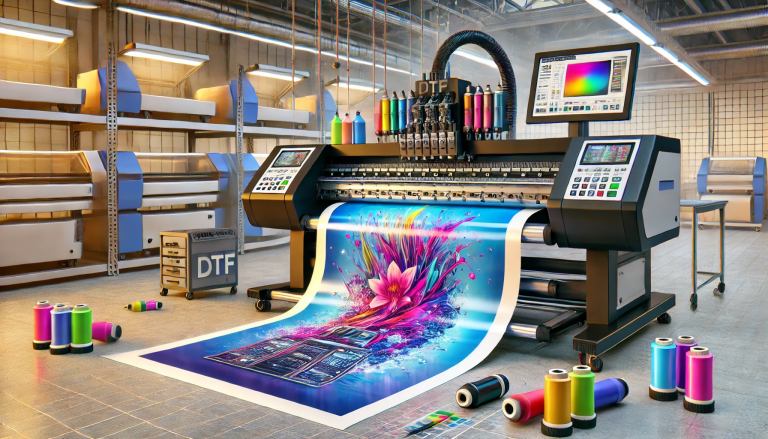“Exploring UV Direct to Film (UV DTF) Printing with Inkjet Technology” -MAXDTF- UV DTF Transfer AB Decal Supplier, China UV Film Transfer Film, Made in China
Introduction
In the ever-evolving world of printing technology, UV Direct to Film (UV DTF) has emerged as a revolutionary method that combines the benefits of traditional screen printing with modern inkjet printing. This hybrid approach offers unparalleled versatility, efficiency, and print quality, making it a game-changer in various industries. In this blog post, we’ll delve into the fascinating world of UV DTF printing with an inkjet printer, exploring its process, advantages, applications, and future potential.
Understanding UV Direct to Film (UV DTF) Printing
UV Direct to Film (DTF) printing is a process that involves transferring ink directly onto a film material, which is then adhered to a substrate using ultraviolet (UV) light. Unlike traditional screen printing, which requires the creation of screens for each color layer, UV DTF printing utilizes an inkjet printer to directly deposit UV-curable inks onto a specially formulated film. This film is then transferred and cured onto the target surface through exposure to UV light, resulting in a vibrant and durable print.
The UV DTF Process
- Preparation: The process begins with selecting the design and preparing it for printing. Unlike conventional screen printing, UV DTF eliminates the need for intricate screen preparation.
- Printing: The chosen design is printed directly onto a UV DTF film using an inkjet printer equipped with UV-curable inks. This step ensures exceptional color accuracy and intricate detailing.
- Film Transfer: Once the design is printed, the UV DTF film is carefully positioned on the target substrate. The adhesive properties of the film enable it to adhere firmly to various surfaces, ranging from fabrics and garments to rigid materials like wood, glass, and plastics.
- UV Curing: The magic of UV DTF lies in the curing process. The printed film, along with the substrate, is exposed to UV light. This exposure rapidly cures the UV-curable inks, bonding them to the substrate and creating a permanent and vibrant print.
Advantages of UV DTF Printing
- High-Quality Prints: UV DTF printing delivers stunning image quality with sharp details, vibrant colors, and smooth gradients. The direct inkjet deposition ensures accurate color representation.
- Versatility: This method can be used on a wide range of substrates, including textiles, ceramics, glass, plastics, and more. The adhesive nature of the film allows for printing on uneven or non-traditional surfaces.
- Efficiency: UV DTF eliminates the need for multiple screens, reducing setup time and costs. It also enables on-demand printing, making it ideal for short runs and personalized designs.
- Eco-Friendly: UV-curable inks used in DTF printing are environmentally friendly, emitting fewer volatile organic compounds (VOCs) compared to solvent-based inks.
Applications of UV DTF Printing
- Apparel and Textiles: UV DTF is widely used in the fashion industry to create custom clothing, sportswear, and accessories. The flexibility to print on various fabrics opens up endless design possibilities.
- Promotional Items: From branded merchandise and promotional products to signage and banners, UV DTF offers a cost-effective solution for producing eye-catching marketing materials.
- Personalized Gifts: The ability to print intricate designs on different materials makes UV DTF ideal for creating personalized gifts like mugs, phone cases, and home decor items.
- Industrial Printing: UV DTF’s durability and resistance to fading make it suitable for industrial applications such as product labels, control panels, and equipment markings.
The Future of UV DTF Printing
As technology continues to advance, we can expect further refinements in UV DTF printing. Innovations may include enhanced UV-curable inks with even greater color gamut, improved adhesion properties, and increased flexibility in substrate options. Additionally, advancements in inkjet printhead technology may lead to faster printing speeds and even higher-resolution outputs.
Conclusion
UV Direct to Film (UV DTF) printing with an inkjet printer has revolutionized the printing landscape by combining the precision of inkjet technology with the durability and versatility of UV curing. Its ability to deliver high-quality prints on various substrates, along with its eco-friendly attributes, has made it a popular choice across industries. With ongoing technological advancements, UV DTF printing is poised to continue shaping the way we create visually striking and durable prints for a wide range of applications.



